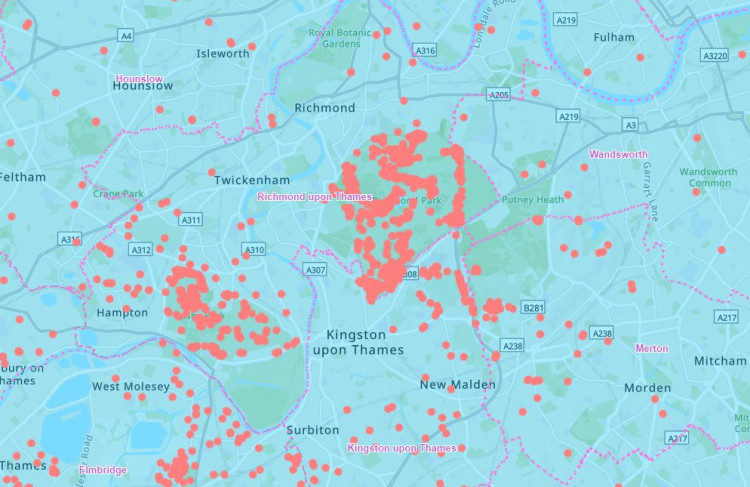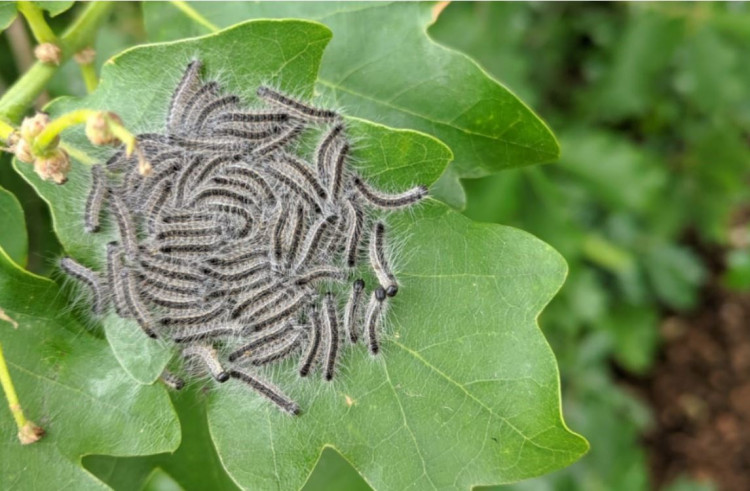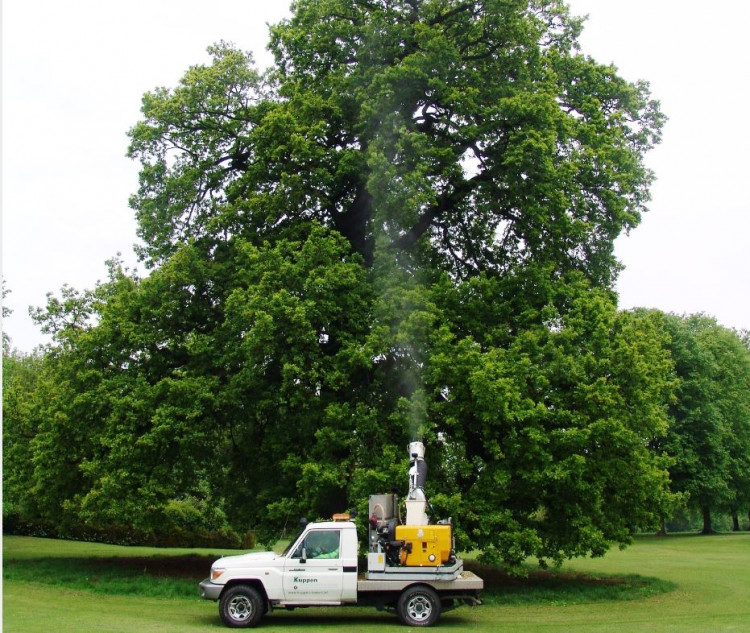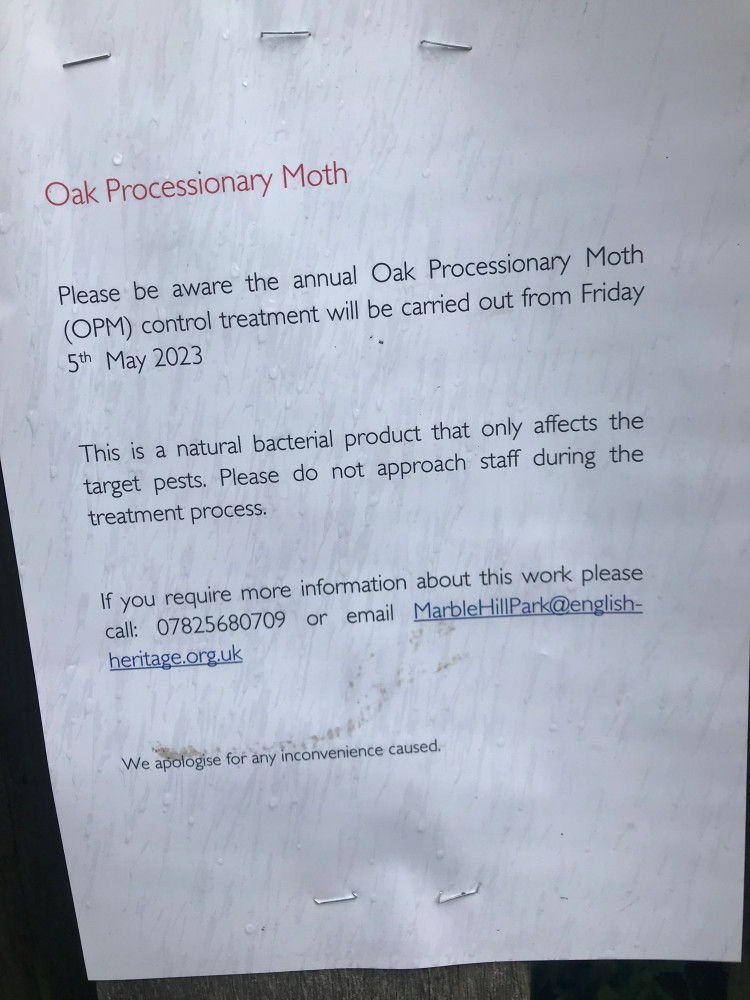Teams move in to tackle ‘toxic’ caterpillars in borough’s parks
By Rory Poulter 9th May 2023
By Rory Poulter 9th May 2023

Teams are moving in to tackle nests of 'toxic' caterpillars which are putting the health of residents and pets at risk and attacking the borough's oak trees.
The caterpillars of the Oak Processionary Moths create nests high in the branches and are covered in tiny toxic hairs than can cause allergic reactions on the skin and lung irritation if breathed in.
Teams of contractors in white hazard suits will be tackling the menace in Marble Hill park in the coming days, while both Richmond Park and Bushy Park are hot spots for the caterpillars.

Control involves spraying the trees with insecticide, removing them with flame guns or vacuuming up the nests to take them away for incineration.
The caterpillar and their nests are seen as a particularly risk to curious children and pets.
It is believed the first colonies were carried into this country on oak trees from the Netherlands which have been used for landscaping new housing developments.

They were first spotted in the Kew area including the Royal Botanical Gardens in 2006 and subsequently large colonies have appeared across south west London before spreading into Surrey and other surrounding areas.
Each caterpillar is covered in 63,000 poisonous hairs which break off and are carried on the wind.
They can trigger allergic reactions and conjunctivitis if they are touched and, if inhaled, they can cause breathing difficulties. In extreme cases, they can even trigger anaphylactic shock and there are several deaths each year in Spain.
A notice on the gates at Marble Hill Park explains that contractors will be spraying the trees to tackle the caterpillars.
It states: "This is a natural bacterial product that only affects the target pests. Please do not approach staff during the treatment process."

In the past, teams at Kew Gardens have tried to kill nests using cans of hairspray and blowtorches. The caterpillars are sprayed to try and fix the hairs in place before they are burned.
As well as tackling the nests, new laws came into effect at the beginning of this month to stop the transfer of oak trees out of areas which are known to have moth colonies to other parts of the country.
English Heritage documents state: "The caterpillars of this pest feed almost exclusively on oak trees and pose a risk to human and animal health. They emerge from minute egg plaques in April of each year, following hatching the larvae feed upon oak leaves, and go through several stages of growth which are known as instars.

"As the caterpillar reaches its third growth stage it begins to develop urticating hairs. These hairs contain an irritating substance which can cause skin rashes, eye problems, sore throats and breathing difficulties for people who come into contact with them. Animals are also at threat and can suffer blistering, tongue irritation and eye problems.
"A responsible approach towards the management of this pest will be taken by English Heritage in line with the recommendations of Richmond Council if seen on site."
CHECK OUT OUR Jobs Section HERE!
teddington vacancies updated hourly!
Click here to see more: teddington jobs
Share:


















